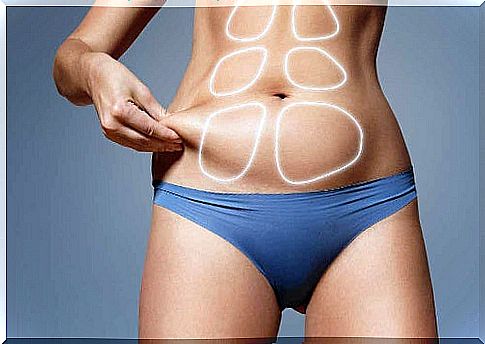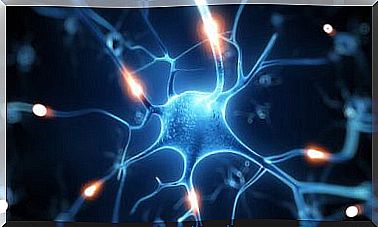Abdominal Muscle Stretch After Childbirth – 6 Things To Avoid

During pregnancy, the belly gradually opens up a space for your baby to grow, so the muscles stretch and part. If you suspect you have abdominal muscle stretch, there are a few recommendations to keep in mind.
Abdominal muscle stretch is referred to as diastasis. This term , like many words in medicine, comes from ancient Greek and consists of the words dias (“through”), statos (“stopped”) and sys (“action”). This term explains the separation of body parts that were previously united. In this case, it is about the rectus abdominis muscles.
By the way, diastasis occurs not only after pregnancy. It is caused by overweight, ascites or fluid accumulation in the abdominal cavity, and excessive exercise of these parts of the body. Learn how to spot abdominal stretch marks here.
How do you know if you have abdominal muscle stretch?

You have had a baby, but you still have a bulging belly over time, experience pain and instability in your lower back, and weakness in your pelvic floor. There was also premature urinary incontinence. Added to this is poor digestion, gas accumulation and even abdominal hernia. All of this indicates a stretch in the abdominal muscles.
What should you do in this situation? As harmful repercussions can occur, the best thing you can do is not to search on your own. If you suspect that you have diastasis, see a specialist. But if, despite all the symptoms, you dare to predict the diagnosis, try the following steps:
- Lie on your back with your legs bent and the soles of your feet flat on the floor.
- Put one hand under your head and put the other hand over your belly button.
- Gently begin exercising your abdominal muscles by lifting your head and shoulders and then look towards your belly button.
- With diastasis, the separation of the rectus muscles will become clearly visible. Use your fingers to measure the width. If there is diastasis, the gap will be up to one inch or 2.5 cm. If it is larger, 4 or 5 centimeters, it may require surgery.
But, without a doubt, it’s best to see your doctor two weeks after natural childbirth. He will know how to assess the pelvic floor, abdominal muscles and pelvis. If there was a caesarean section, see your doctor a month later for any discomfort in this area.
Your doctor will carefully examine the area and determine if the abdominal muscles are separated according to the protocol. So it will determine if there is a stretch of abdominal muscles and what type. It can be functional (when the transverse muscle of the abdomen holds the viscera) or anatomical (when it extends outside or a hernia appears).
6 things to avoid if you have abdominal stretch marks
If you suspect you have diastasis, consider the following recommendations that will surely help you avoid further complications. Of course, follow your doctor’s instructions to the letter.
1. Don’t do classic sit-ups
If the rectal muscles have split, exercising crunches won’t get him back in place. On the contrary, it will make the situation even worse. If you are familiar with hypopressure exercises, do them by trying postural techniques that lower abdominal pressure.
2. Save your running or jumping for later
Are you looking in the mirror and you are not satisfied with your figure after giving birth? Get hold of your anxiety, and if you suspect abdominal muscle stretch, vigorous exercise such as jogging or jumping is strongly discouraged. These exercises increase abdominal tone and put more pressure on the linea alba , deepening it even more.
3. Ask for help, avoid lifting weights
The most difficult thing after giving birth is having to ask for help with lifting some weight besides the baby. Even if you are alone in a room and need to take care of it and lift your toddler from a crib or bed, it is a considerable effort.
If possible, do not leave your child alone and warn the family around you about a need so closely related to your health. Refraining from lifting weights, among other precautions, will largely prevent pelvic floor injuries.
4. Exercise caution when wearing postpartum girdles
The tendency to seek relief is natural, especially when combined with the experience of mothers and grandmothers. This includes wearing postpartum belts. While they do not eliminate abdominal muscle tension, they relieve pain, provide stability, and improve posture.
Remember, however, that pain relief is camouflaged by a specific problem of diastasis. We recommend using them only after obtaining a medical evaluation and diagnosis. This way you will use the most suitable product for your specific ailment.
5. Take precautionary measures when coughing or sneezing
When you cough or sneeze, grasp your abdomen with your hands to hold your bowels at the white line of suspected stretch mark. Likewise, take precautions when you get out of bed. First, lie on your side and bend your knees, not your torso, to get up.
6. Avoid constipation if you have abdominal muscle stretch
Do whatever you can to avoid constipation. They are normal in the first days of puerperium, but don’t let them develop. The abdominal muscles are distended and do not function as usual. You feel discomfort and even fear. All of this is understandable.
To make things easier, stay hydrated and eat high-fiber foods. Rest but don’t neglect exercise, and when you need to go to the toilet, don’t hold it back. Relax. And as a supplement, use hypopressure exercises and Kegel exercises. They will help you control constipation and hemorrhoids.
7. Implement the therapist’s recommendations
If physical therapy has failed, an option is surgery that reduces the separation of the white line wider than 3 centimeters or more. First, however, once diastasis has been diagnosed, enroll in a physiotherapy session appropriate to your specific case.

Recommended exercises for stretch marks of the abdominal muscles
If you suspect you may have diastasis, there is no one-size-fits-all exercise, but there are the best options for every woman. Let a specialist assess your condition and follow its recommendations. Most likely, you will spare yourself the operation and help your body naturally aim to restore its functions.
It is worth emphasizing that physiotherapy gives excellent results. Recent studies indicate which sessions of stabilizing muscles in this location improve lumbar and pelvic stability:
Hypopressive gymnastics helps with abdominal muscle stretch
These are postural, repetitive and rhythmic exercises that begin with the control of the breathing and the diaphragm to elevate the uterus, bladder and intestines. However, they are not recommended until three months after giving birth. They are designed to make changes to your whole body regimen.
In addition, they reduce glare in the abdominal cavity and chest and ensure automatic activation of the muscles of the perineum and the abdominal girdle. They reduce and tighten the waist and pelvic floor muscles and reduce back problems by improving posture.
Exercises involuntarily activating the abdominal muscles
Repeating these exercises aims to automatically tension the abdominal muscle when lifting, coughing, laughing, running or jumping. In this sense, it generates a biomechanical condition that is conducive to making movements because it controls the pressure in the abdominal cavity.
Exercises to activate the oblique abdominal muscles and the rectus anterior muscle
When the transverse muscle is activated, the exercised is the oblique muscles, the anterolateral muscles that rotate the torso and support the bowels. This is very important because the transverse muscle guarantees the stability of the lumbar spine, avoiding pressure on the lumbar structures and the appearance of pain.
In general, go to the bathroom before starting an exercise session, as changes in bladder filling can be seen as your autonomic nervous system is working. Apnea, on the other hand, causes the glottis to close, making the throat dry, so remember to stay hydrated. Important: Exercise on an empty stomach or after digestion.
Thanks to these exercises, you will get adequate stabilization of the skeleton axis, which guarantees optimal balance and movement of the upper and lower limbs in your everyday life.
When is it necessary to see a doctor?
When low back pain, gas, and a bulging abdomen exceed eight weeks postpartum, it is wise to seek a medical evaluation. Once you know the degree of diastasis, you will be able to take control with physiotherapy, which offers the best exercises to bring the rectal abdominals into place.
If you suspect you have abdominal stretch …
Don’t worry, it’s very common. At least one in two women suffers from it, and in many cases the problem goes away on its own. However, you should take precautions before and after giving birth.
It is typical of pregnancy for the muscles to relax. Be careful with your movements and work that may complicate the problem. If you are preparing to become pregnant, exercise and strengthen your abs. Abdominal muscle stretch will not be a problem for you.








